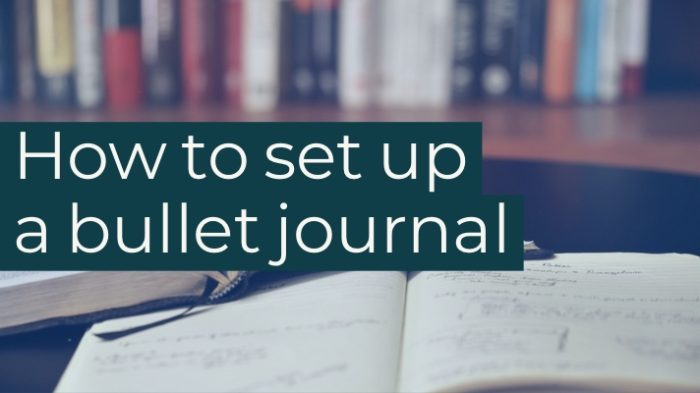It’s been a couple years since I wrote about how I set up my bullet journal. I make changes every now and then to what I track and what goes in my notebook. So, here’s an update on how I set up my bullet journal and what I use it for.
While I use a lot of the same ideas as the bullet journal method, I don’t follow it very closely. For example, I don’t keep many to do lists in my bullet journal. I use the iOS Reminders app on my phone for those instead.
The notebook
I use an A5 hardcover Leuchtturm 1917 with a dotted grid for my bullet journal. I really like this notebook for a few reasons:
- Dot grid — The dots serve as a subtle guide for writing but are light enough that you can ignore them and treat the page as if it were blank. The grid helps me keep my writing neat without interfering with doodles and diagrams.
- Numbered pages — Much neater than me numbering the pages and easy for referencing pages.
- Ribbon bookmarks — Two ribbons are handy for marking pages. I keep one ribbon with my monthly spread and the other ribbon at the next available page.
- Hardcover — Sturdy enough that I don’t have to be at a table to write.
- Paper quality — Ink rarely bleeds through; limited ghosting.
The first thing I do when I start a new notebook is break in the spine. Taking a few minutes to do this ensures the spine is broken in gently (and minimizes damage to it later) and helps the notebook lie flat.
Title page
On the title page, I write my first name, phone number, and a short “If lost and found, please call…” message. I’m careful with my notebooks when I’m in cafes and using them in public, but you never know when you might accidentally leave a notebook behind! Including your name and a way to contact you in the notebook makes it easier for someone to return it to you.
Symbols key
On the first page (left of the first index page), I write the start date, leave room to write the end date, and include a key for symbols I use in my notebook. The first four are straight from the original bullet journal set up. I use my notebook to log stuff that I watch, listen to, read, and write, so I’ve got simple symbols to mark that info, too.
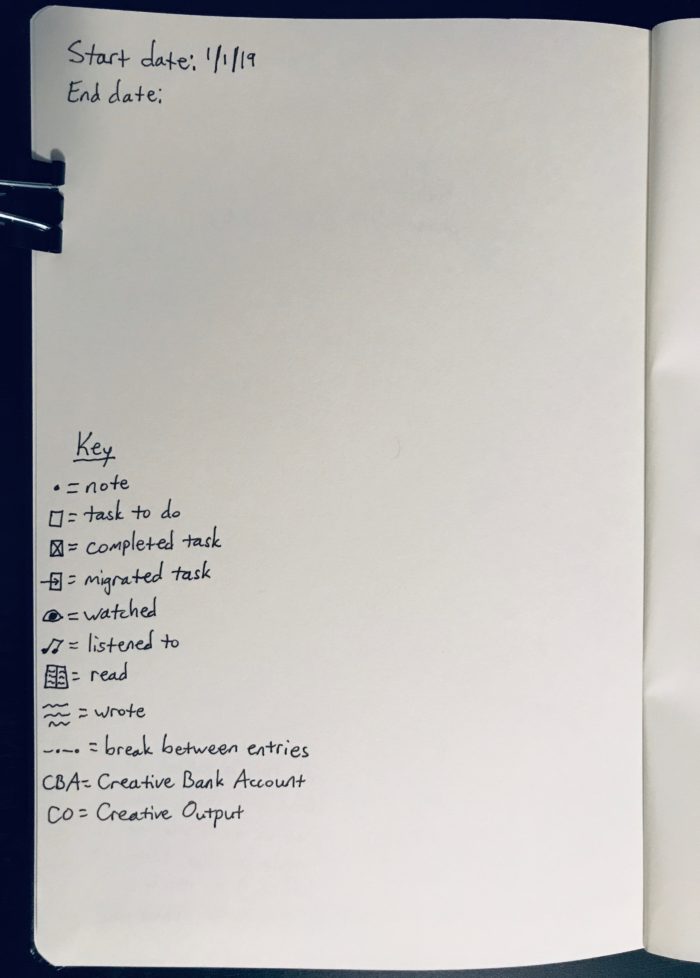
Index pages
I use the index pages to log important pages in my notebook, so there’s nothing to set up here ahead of time.
Future log
I use one page to log future events and to note any significant events as they happen. This is a handy reference during the year.
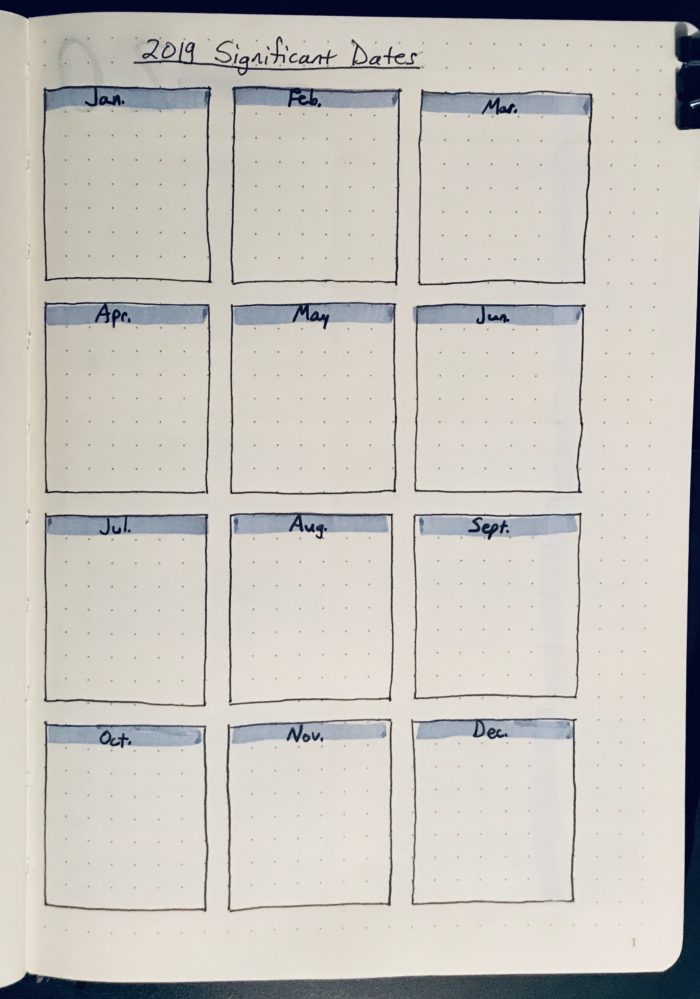
Year at-a-glance
I use a two-page spread for a year calendar view. I print out mini-calendars and paste them in, 6 months on each page.
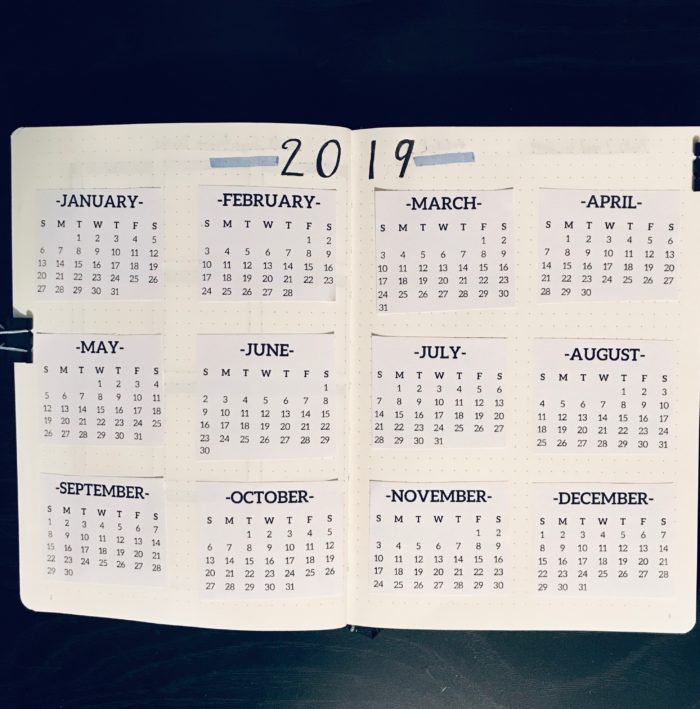
Books and movies logs
I have a two-page spread to list books I read during the year. I mark books I like with an asterisk (*).
The next two-page spread is to list movies I watched during the year. I give each movie a star rating (out of 5 stars), so I can see at a glance which movies I did and did not like.
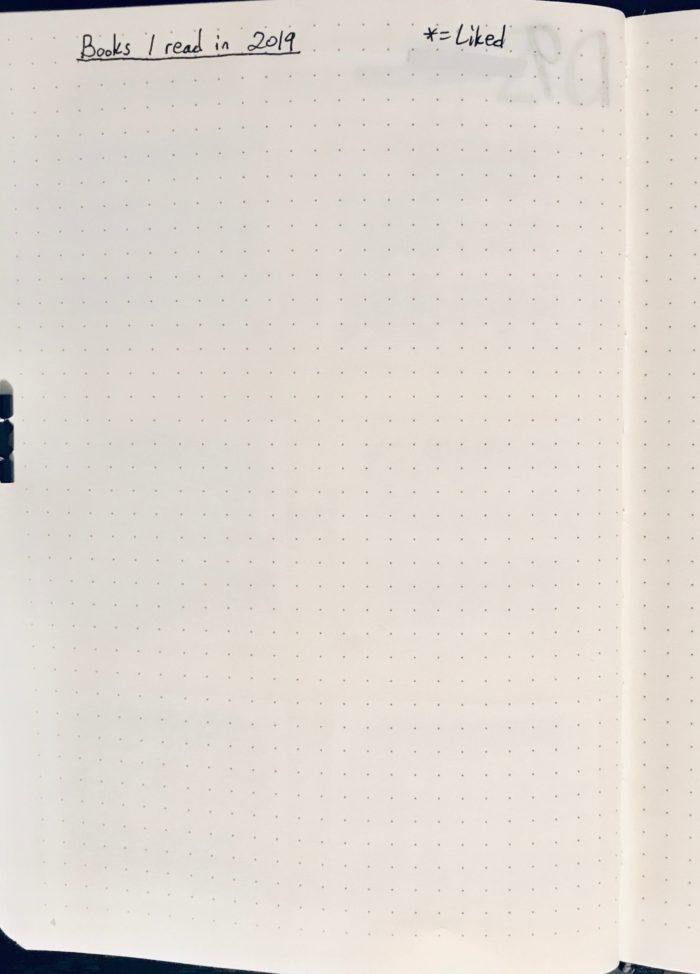
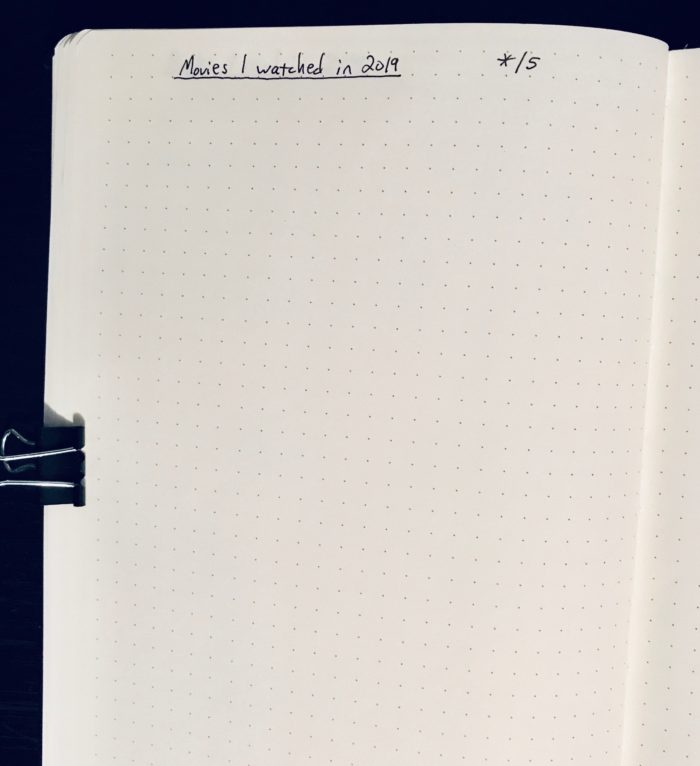
Wish list
The next page is a Wish List for gifts I want or things I’m saving up for. This is a page I added last year for the first time, because I would think of things during the year and then forget about them by the time it was my birthday or Christmas.
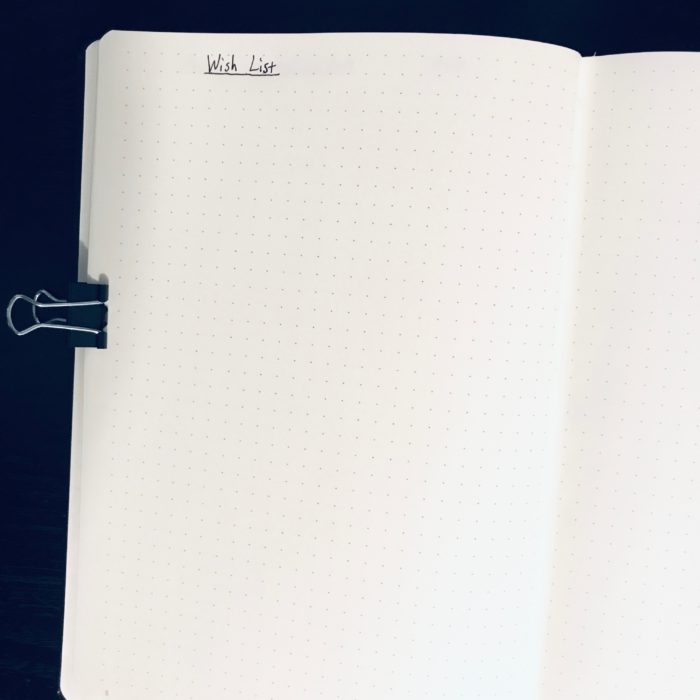
Monthly spread
I have a monthly spread that I create at the beginning of each month. I treat the left-hand page like a scrapbook page for memories or significant events in the month.
The right hand page is a tracker for how I spend my spare time.
- “CBA” stands for “creative bank account” (an idea from Jake Parker). I mark this column for time I spend watching TV shows or movies, reading, listening to music or podcasts, and anything else that could be creative inspiration (like concerts or theater shows).
- “CO” stands for “creative output.” I mark this column for time I spend on something creative (drawing, writing, and arts and crafts). This includes practice/learning time—not only finished work.
- The asterisk (*) is an “other” column for social events or running errands…anything that’s not related to CBA or CO.
- “Notes” is for any notes I want to log.
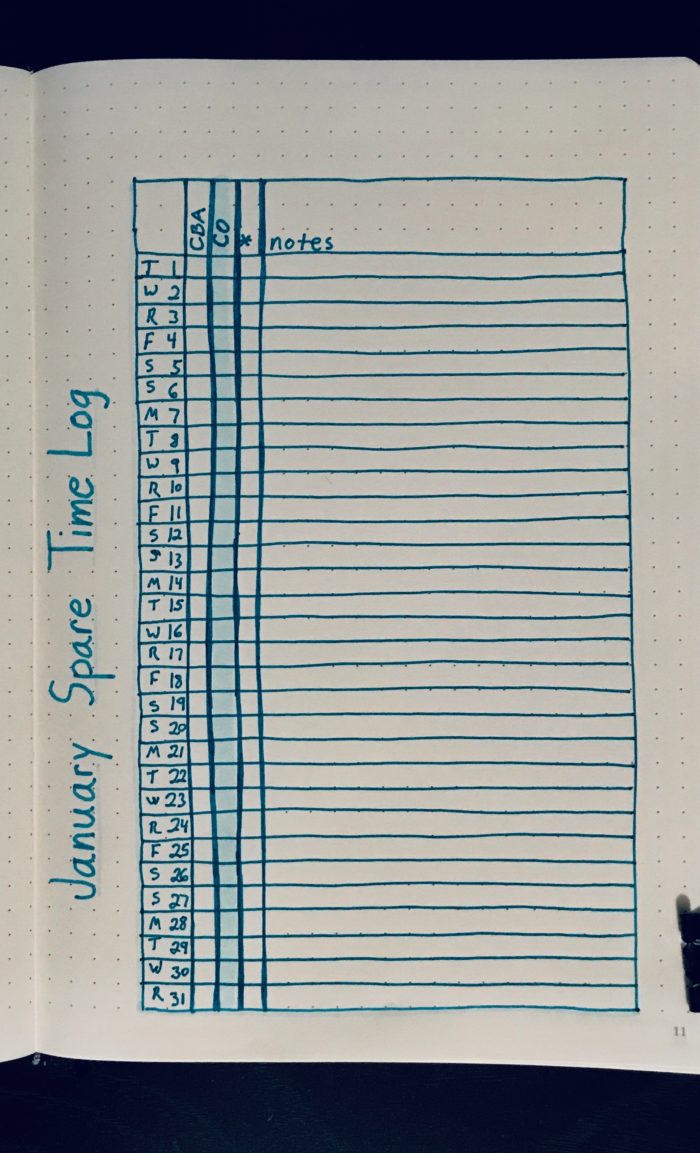
Review tab
The other thing that’s part of my setup is a removable tab (like these tabs from Post-It). I use this to keep track of what I’ve indexed. Periodically during the year, I’ll page through my notebook and decide if there are pages I should log in the index. This tab marks what I’ve reviewed, so I know where to pick up the next time I review pages.
Simple setup
I keep my setup simple so that it’s easy to repeat and doesn’t take too much time to create layouts. I limit the colors and decorations that I use so that I can focus on the work I’m doing, rather than spending too much time on the notebook itself. This makes it easy to stay with the journal throughout the year without feeling overwhelmed.
